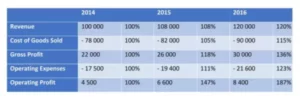What Are the 4 Types of Drinkers Alcoholics?
Content
Chronic severe alcoholics experience the highest rate of alcohol-related emergency room visits, professional and social problems, and withdrawal. Among the various models that define types of alcoholics, one focuses on the motives behind drinking to gain a deeper insight into alcohol addiction and understanding an alcoholic. On the other hand, young antisocial alcoholics are more likely to become aware of their condition because there is evidence their group has the highest treatment-seeking rate among other subtypes. An example of a person who is classified as an intermediate familial alcoholic is someone who grew up in a family where heavy drinking is practiced and adopted this drinking behavior later in life. Beyond merely recognizing that there are different types of alcoholics, it is also important to realize that overcoming alcoholism takes years, not just days. Knowing that a recovering alcoholic needs to stay away from the substance altogether can help you overcome substance abuse or support those around you on the road to recovery.
Among all alcoholic subtypes, the Chronic Severe alcoholic is the most likely to seek treatment – two-thirds will go to alcohol rehab. The NESARC is a nationally-representative survey that looks at alcohol, drug, and mental disorders in America. Roughly 1500 respondents from different parts of the country who meet the medical criteria for a diagnosis of Alcohol Use Disorder were included—both receiving and not receiving treatment. In the past, identification methods for alcoholic subtypes focused on drinkers who were hospitalized or receiving some other type of medical treatment.
A Replication Study in Swedish Adoptees
The chronic severe subtype makes up the smallest percentage of alcoholics, with only 9.2%. This group tends to start drinking at a young age (around 15) but typically develops an alcohol dependence at an intermediate age (around 29). Seventy-seven percent of this group have close family members with alcoholism, the highest percentage of any subtype. And 47% of the members of this group exhibit antisocial personality disorder, the second highest rate of any subtype. This subtype is the most likely of any to experience major depression, dysthymia, bipolar disorder, generalized anxiety disorder, social phobia, and panic disorder.
- They are typically in their middle-twenties and possess a history including an early initiation of alcohol abuse.
- Family and friends will have often abandoned this person due to their major destructive tendencies.
- As with other addictions, alcohol use disorder can range from mild to severe.
- The resolution of these discrepancies will likely require further studies in additional subject populations.
While they often begin drinking when nearing young adulthood, around age 17, intermediate familial alcoholics typically won’t struggle with alcohol-related issues until their mid-30s, CBS News reports. This subtype will typically be middle-aged, and half will have a familial link to alcoholism. Around 50 percent of intermediate familial alcoholics will also have suffered from depression and 20 percent from bipolar disorder. Families, spouses, and coworkers may enable the alcoholic https://ecosoberhouse.com/article/stages-of-alcohol-intoxication-alcohol-toxicity-treatment/ behavior of a functional alcoholic since the person remains successful and is able to continue taking care of things personally and professionally despite their drinking. Functional alcoholics will often lead a kind of “double life,” however, and compartmentalize their professional lives separate from their drinking identity. Functional alcoholics typically do not fit the general stereotype for the disease, as alcohol does not regularly interfere with their daily life obligations.
The 7 Types of Alcoholics
Conversely, type II alcoholism generally commenced during adolescence or early adulthood, and alcohol consumption frequently was accompanied by fighting and arrests. In addition, alcohol abuse was moderately severe and frequently required treatment, although the severity of abuse did not change over time as it did in type I alcoholism. This type of alcoholic also has the highest rates of psychiatric disorders as well. More chronic severe alcoholics also have Antisocial Personality Disorder than any other subtype besides the Young Antisocial subtype.
How many basic types of drinkers are there?
There are three main categories that users of alcohol fall into; social drinker, alcohol abuser or alcoholic. Most people who drink alcohol will not have any problems with their consumption; however, for those who do have a problem handling it, oftentimes, their problem will gradually worsen.
The resolution of these discrepancies will likely require further studies in additional subject populations. Familial alcoholism illustrated in “The Peasants Supper,” 1642, by Les Fréres Le Nain. Our admissions coordinators are here to help you get started with treatment the right way.
Treatment for Alcohol Use Disorder
Submit your number and receive a free call today from a treatment provider. They’re 60% male and able to maintain regular jobs and relationships, with the highest education and income among all subtypes. Compared to the previous three types of drinkers, those who drink to cope are more likely to consume more alcohol and consequently suffer from more problems caused by alcohol. Drinking to cope is more commonly found in adolescents and young adults than in other age groups.
- Alcohol impacts brain chemistry, and regular exposure to the mind-altering substance may actually change the way the brain’s circuitry works.
- They are also likely to be regular smokers and use other substances, including marijuana, cocaine, and opioids.
- But these people might drink to excess in the privacy of their own homes every single night, and they may be unable to control how much they drink when they start drinking.
- It is estimated that 1/3 of the anti-social type alcoholic will seek out treatment.
- They also have moderate rates of cigarette smoking and are the least likely to have legal problems among other types of alcoholics.
- The young adult subtype category is composed of young adults who have low rates of co-occurring substance use and other mental health issues.
Most smoke, and many also abuse marijuana, cocaine, and opioids such as heroin or prescription painkillers. Outpatient treatment is a good option for people who have responsibilities that they cannot give up (such as family, work, or school), as well as a high level of motivation for getting sober. Patients sleep at the treatment facility and undergo all portions of the program from detoxification to aftercare with medical supervision. The NIAAA reports over 1,500 college students die each year due to alcohol-related causes. Alcoholics can be separated into five different categories based on different factors. Although the replication study reproduced many of the findings of the original report, some discrepancies also existed.
They are not meant as a diagnostic to determine if someone is suffering from alcoholism. Rather, they are meant to further the study of alcoholism and guide future research and prevention efforts. Those in this subtype typically start drinking early (19) and develop alcohol dependence early (24).
- While enhancement drinkers drink to achieve positive emotions, those who drink to cope do so because they want to avoid negative feelings.
- The average age of the young adult subtype is 25, with many in the category developing a dependence to alcohol by the age of 20.
- They also binge drink far more than any other group, but less frequently.
- This subtype of alcoholics is relatively young, about 26 to 27 years old, with 75 percent being male.
- This desire, which also may lead to other drug abuse, generally begins during adolescence or early adulthood.
- NIH reports that around half of all functional alcoholics have been smokers, 30 percent have a family history of alcoholism, and 25 percent have suffered from major depression at some point in their lives.
According to the figures from the study, only about 27% end up trying to get treatment, which puts it right in the middle as far as likeliness to get help compared to the other types. One of the main differentiators of this type of alcoholism is the fact that people who fall into this subtype are more prone to having antisocial behaviors. And given that many of these behaviors can also be quite jarring in real types of alcoholics life, it often isn’t hard to spot a Young Antisocial Alcoholic. These types of alcoholics, for example, have a 52.5% probability of having a first and second-degree family member with an alcohol use disorder. Besides Chronic Severe Alcoholics, that makes this type the most likely to have an alcoholic home growing up. People with ASPD are 21 times more likely to develop alcohol dependence in their lifetimes.
They tend to drink alcohol every other day, an average of 181 days per year, and they consume five or more drinks on 54% of those days. People in the intermediate familial subtype often have co-occurring mental health problems, such as clinical depression or bipolar disorder. The good news is that treatment for functioning alcoholism or chronic alcoholism, or any subclassification of alcohol use disorder, can lead to long-term sobriety and recovery.













Son Yorumlar